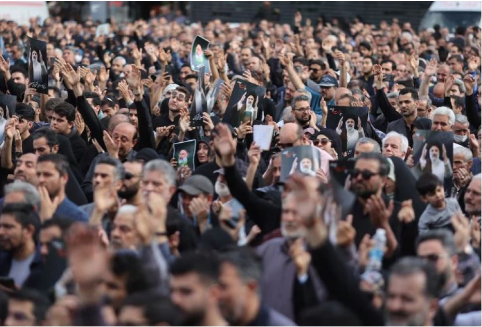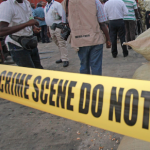Iran declared five days of mourning for President Ebrahim Raisi on Monday following his death in a helicopter crash along with Foreign Minister Hossein Amir Abdollahian.
However, the public reaction was notably subdued compared to the overwhelming grief that marked the deaths of other prominent figures in the Islamic Republic’s 45-year history.
While government loyalists gathered in mosques and squares to offer prayers for Raisi and Abdollahian, daily life largely continued unaffected, with most shops remaining open and minimal official efforts to disrupt normal activities.
This muted response stands in stark contrast to the intense public mourning often observed in Iran during such events.
Amidst this, a year after Raisi’s hardline government brutally suppressed the largest anti-establishment protests since the 1979 revolution, some opponents discreetly celebrated his death.
Videos circulated online showing people passing out sweets, indicating a segment of the population’s relief at the demise of a leader they saw as repressive.
Laila, a 21-year-old student in Tehran, told Reuters by phone that she was not saddened by Raisi’s death, “because he ordered the crackdown on women for hijab.”
“But I am sad because even with Raisi’s death this regime will not change,” she said.
Rights groups report that hundreds of Iranians died in the 2022-2023 demonstrations, which were sparked by the death of a young Iranian Kurdish woman in custody. She had been arrested by the morality police for violating the country’s strict dress codes.
The authorities’ response to these protests, along with their handling of various political, social, and economic crises, has significantly widened the gap between the clerical rulers and the general population.
Supporters of the clerical establishment, however, praised President Ebrahim Raisi. The 63-year-old former hardline jurist was elected in a tightly controlled vote in 2021, and his admirers spoke highly of his contributions and leadership.
“He was a hard working president. His legacy will endure as long as we are alive,” said Mohammad Hossein Zarrabi, 28, a member of the volunteer Basij militia in the holy Shi’ite city of Qom
There was little of the emotional rhetoric that accompanied the deaths of publicly revered figures like Qasem Soleimani, the senior commander of Iran’s elite Revolutionary Guards killed by a U.S. missile in 2020 in Iraq.
Soleimani’s funeral drew huge crowds of mourners, who wept with sorrow and rage.
For opponents of Iran’s clerical rulers, both at home and in exile, Raisi has long been a hate figure. His notoriety dates back to the 1980s, when he was blamed for playing a leading role as a jurist in the execution of dissidents.
Iran has never acknowledged the mass executions, but Amnesty International reports that 5,000 Iranians, possibly more, were executed in the first decade after the revolution.
“I congratulate the families of the victims of the executions,” internet user Soran Mansournia posted in an online forum debating the legacy of Raisi’s death.
However, Narges, another user, lamented Raisi as having died “a martyr’s death”.
Many Iranians said they expected that Raisi’s death would have little impact on how the country would be ruled, with the establishment likely to replace him with another figure with similarly hardline views.
“Who cares. One hardliner dies, another takes over and our misery continues,” said Reza, 47, a shopkeeper in the central desert city of Yazd who did not give his full name fearing reprisals.
“We’re too busy with economic and social issues to worry about such news.”



